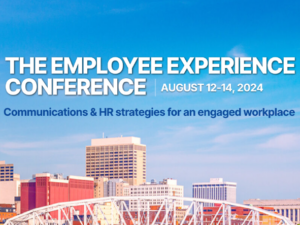Engaging employees is more critical than ever. Here’s how to do it right.
Learn how to use employee-generated content (EGC) to fuel employee retention, engagement, and recruitment.
The Great Resignation was a big wake-up call for managers and human resources teams. With 20 million Americans leaving their job in the second half of 2021, it taught us that health and well-being were greater priorities for employees than keeping their job. Unemployment was at an all-time low and open job listings were high, leaving candidates with a sea of options to choose from.
So, with recruiters at top companies vying for your employees, why would they stay?
Employees stay when they are engaged in their company culture, involved in the community, and have autonomy and flexibility. Many well-intentioned companies have been showcasing their company culture and touting benefits programs as a competitive advantage in the fight for talent. However, they’re missing half the battle — where are their retention efforts? What good is a benefits program if your employees are too busy to use it? Companies have their work cut out for them — not just in recruiting talent, but in keeping the talent they already have.
What better way for brands to engage both candidates and employees than by giving employees the power to showcase their experience? When brands pass the mic to their employees, people listen and engage. From an employee resharing a brand’s post with their own commentary to submitting content to an internal contest, employee-generated content (EGC) is one of the best ways to improve recruiting efforts and retention of current employees. This kind of content has a certain authenticity to it that’s far more trusted by consumers than the brand posting about itself. It even gets about eight times more engagement than brand-created content, according to TINT’s State of User-Generated Content 2022 report.
When employees feel taken care of, they’re more willing to create content about the company they work for. Brands can then repurpose this EGC onto:
- Career pages
- Screens in the workplace
- Social media
- Recruitment event materials
- Job listings
Participating in EGC fuels employee engagement and retention – while seeing the company’s culture from an employee’s perspective attracts talent.
4 ways to encourage employees to create content
Employee-generated content often starts from the top, with brand channels and leadership taking a stance. This gives employees an example to follow and a dialogue to engage in. Easier said than done, but here are a few proven ways to get started.
- Show Us Your Leave.
Many brands are highlighting their leave policies with the hashtag #ShowUsYourLeave. Employees are then re-sharing their employer’s LinkedIn post with commentary about how it has impacted them personally. Some are learning things about their colleagues that they never knew, sharing comments of support. This builds up your company culture and sense of community.
Keep in mind, you don’t need to be participating in a trend to get this kind of EGC. You could always make a post about one of your benefits and request that employees share it with stories of how they’ve used it.
- Address burnout.
When managers check in with employees about their workload and adjust expectations to reduce or prevent burnout, employees feel seen and appreciated. They’re then quick to share their satisfaction on Glassdoor and social media. They’re also quick to share when the opposite is true. In this LinkedIn post, one man compares his experiences in both situations.
Brands can also spark honest conversations about mental health and challenges in the workplace, not just on a one-on-one basis, but company-wide and externally. That way, employees can contribute to the conversation, whether in the comments or by re-sharing a brand post, comparing perspectives both with colleagues and peers in outside environments.
- Encourage rest and recharging, and lead by example.
Managers and HR professionals should show that it’s okay, expected even, to take time off and to not return any emails or Slack messages when they do so. Employees quit the jobs they’re too busy to escape from, but happily post about vacations their employers encouraged them to take.
To get EGC around time off, you could hold a contest where employees submit their best photos of your mascot or brand swag at their vacation spot.
- Build a people-first culture.
Community doesn’t just happen. You have to build it. Foster connections between employees whether by celebrating holidays together, having a happy hour or holding contests. One way to share the content you get from these events is on screens around the workplace. EGC doesn’t need to just be external. In fact, more companies should showcase pictures of employees in the office to build a better community and culture, which boosts retention rates. We’re talking screensavers, printed pictures, and TV screens, to name a few. Coincidentally, when employees see pictures taken by their colleagues, they’re more likely to take and submit their own, according to the State of User-Generated Content report.
Employee-generated content is key to attracting new employees, establishing company loyalty and retaining employees. It’s up to your leaders and HR team to set the example, create the contests, and/or think of a hashtag with which employees can share content. Employees are already creating content about your brand or would be happy to do so. You just need a system in place to make the most of it. That’s where a platform like TINT can help find, inspire and collect the best content from employees that you can then reshare everywhere.
EGC is just one form of user-generated content. To learn more about EGC and user-generated content, download TINT’s State of User-Generated Content report. This report compares survey results from 1,000 marketers and consumers to highlight the key themes and trends that help brands leverage the voices of fans, customers, influencers and teams.
Olivia Lucero is SEO manager at TINT.
COMMENT
Ragan.com Daily Headlines
RECOMMENDED READING
Tags: employee engagement







